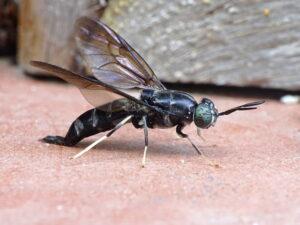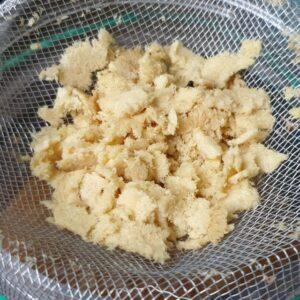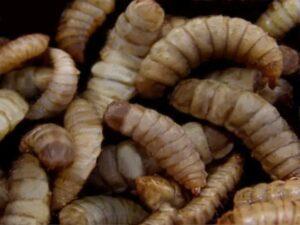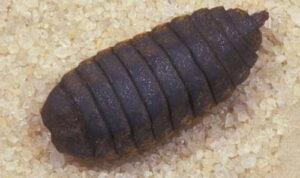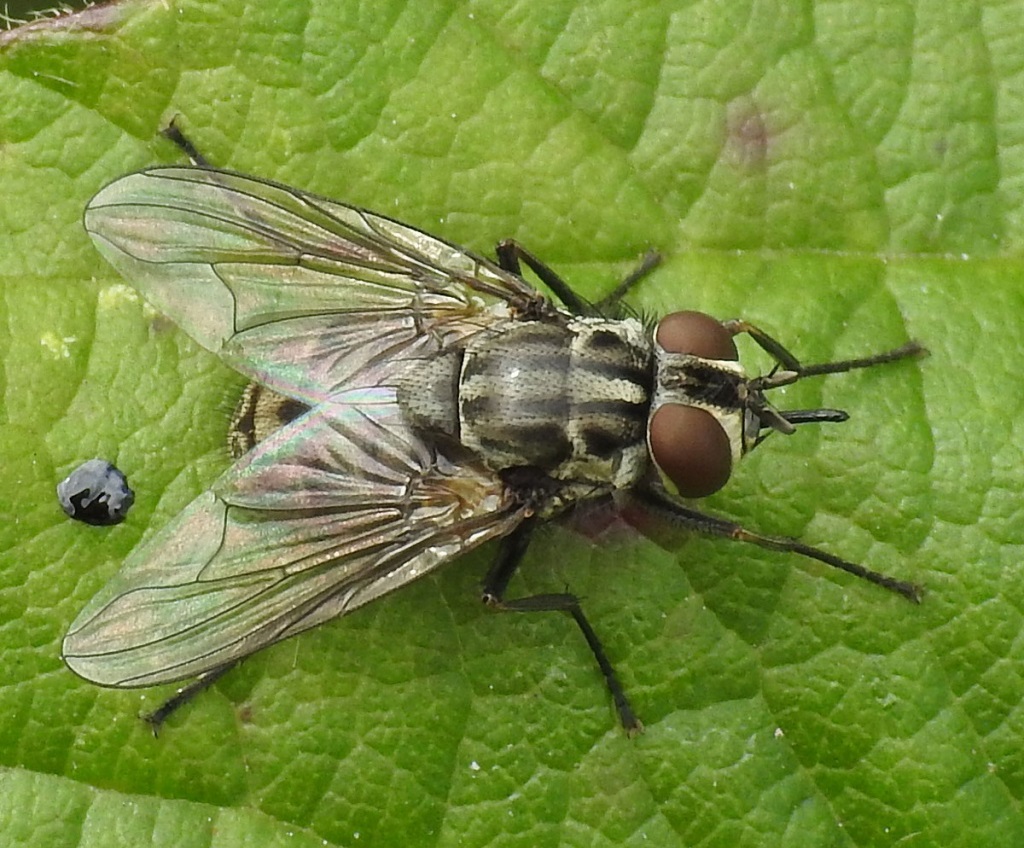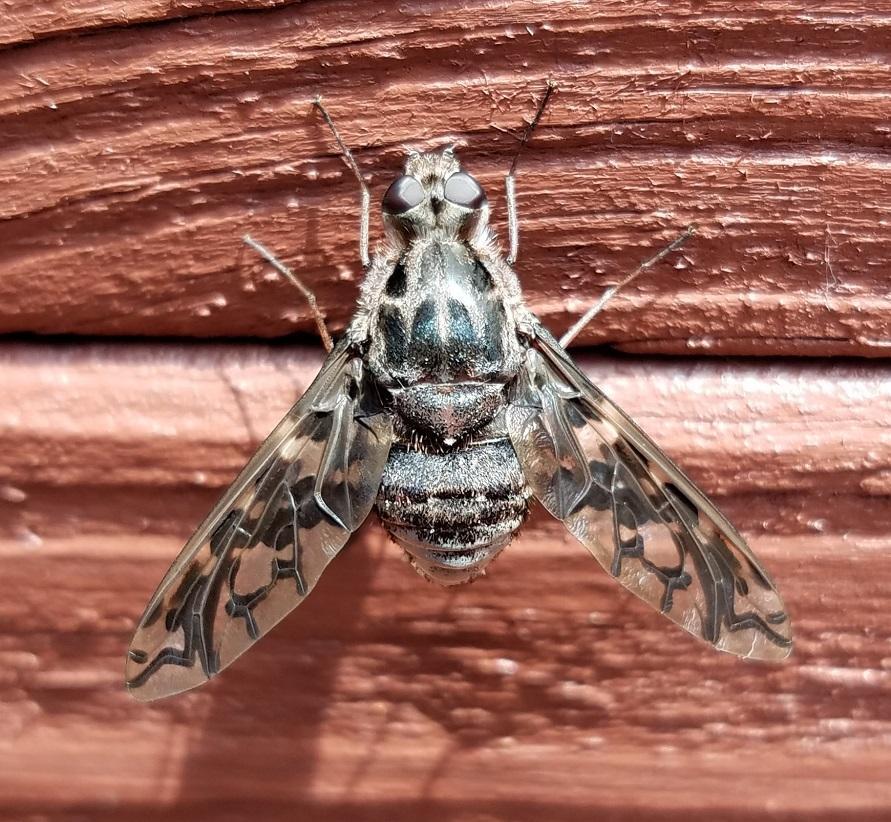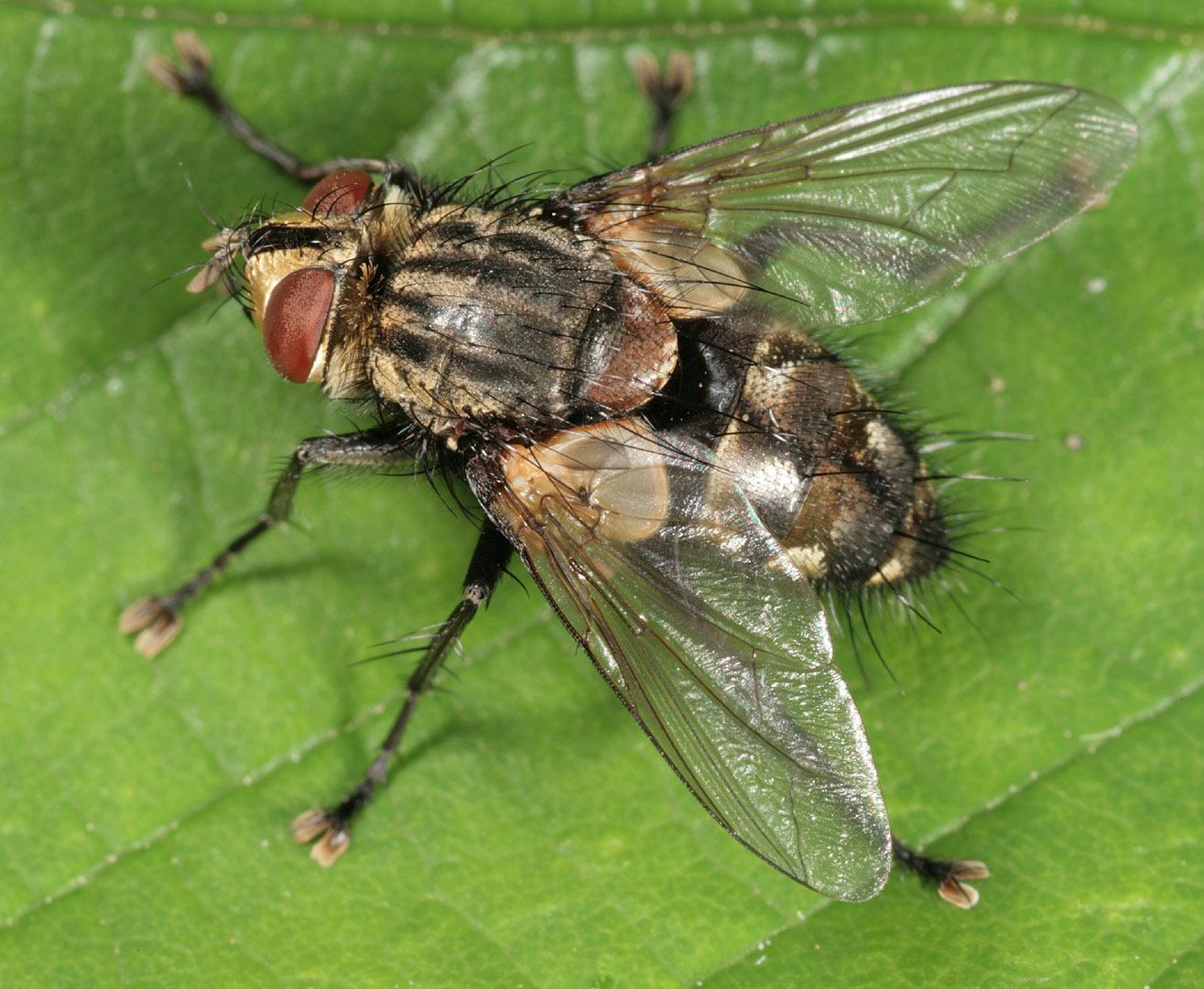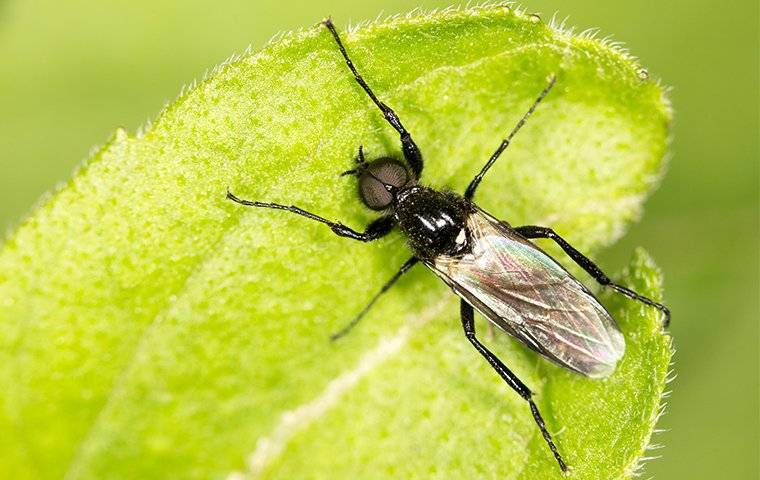Black Soldier Fly (Hermetia illucens)
Updated on
17/11/2022The black soldier is a common, widespread, medium-sized beneficial insect. The larvae are crucial decomposers of the ecosystem as they break down organic substrates and return nutrients to the soil. They also act as alternative protein sources for animal feed, aquaculture, and human and pet food.
Scientific Classification
- Class:Insecta
- Order:Diptera
- Family:Stratiomyidae
- Genus:Hermetia
- Species:H. illucens
Conservation Status
Description
They are 5/8 inches (16 mm) long. Their bodies are predominantly black with metallic blue to green reflections on their thorax. Their abdomens can sometimes have a reddish end. The dorsal part of the 2nd abdominal segment has translucent areas, the reason behind its specific Latin name.
The broad head has highly developed eyes, with the antennae double its head’s length. The black legs have whitish tarsi. The membranous wings overlap to fold horizontally over the abdomen. The fly looks like the organ pipe mud dauber wasp and its relatives with respect to its color, size, and appearance.
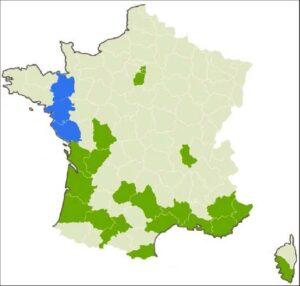
Distribution: All over the world.
Habitat: Manure, compost, and outdoor toilets are the breeding grounds. They are found around decaying organic material like animal waste.
Do They Bite/Sting: No.
Lifespan: Roughly45 days.
Predators: The parasitoid species, Dirhinus giffardii.
Behavior and Characteristics
Diet
They feed on compost, manure and other organic waste.
Life Cycle
1. Egg Stage
The females lay 206-639 eggs at a time in crevices or on services near decaying matter like compost or manure. They hatch in 4 days.
2. Larva Stage
The newly emerged larvae are 1 mm (0.04 in) in size and reach a length of 25 mm (1 inch) at the end of the larval stage. Then they weigh 0.10-0.22 g. They feed on a large variety of organic matter and can adapt to different nutrient contents. They have voracious appetites and are used to compost agricultural wastes and household food scraps.
Depending on the food substrates provided to them, this stage lasts for 18-36 days, of which the prepupal or postfeeding stage is of 7 days. Low temperatures and lack of food can prolong the stage.
2. Pupa Stage
The exoskeleton (skin) darkens, and the pupa develops inside it. This stage lasts for 1-2 weeks.
3. Adult Stage
Adults typically live for 47-73 days when they have water and food to sustain themselves. The same reduces to 8-10 days when they have to live only on the fat reserves gathered during the larval stage and water.
FAQs
Though their loud buzzing sound is a concern to many, these non-invasive flies are not at all harmful. They are not disease vectors.
Bearded dragons can eat black soldier fly larvae. Leopard geckos, day geckos, crested geckos, turtles, hedgehogs, and poison dart frogs also eat them.
Source
observation.org, candide.com, researchgate.net, kimmyfarm.com, eshhstirling.files.wordpress.com, entnemdept.ufl.edu,




